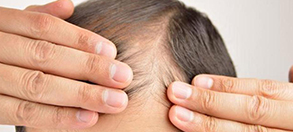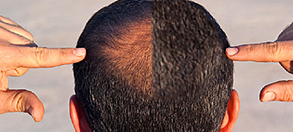Hair analysis is the process by which hair is analyzed to find out things about the person it came from. In hair analysis, generally, the more hair that is available for analysis, the better the results will be. Typically, the best samples for analysis include somewhere around 50 strands of hair. This may sound like a lot of hair; however, most people have close to 100,000 strands of hair on their heads. The best results are also often received when the hair strands are taken from the back of the head versus the sides or the front.
The hair can be analyzed by determining the chemical makeup of the hair or extracting DNA from the hair follicle. Hair can also be analyzed through the use of a microscope or by simply comparing two or more hairs against one another. This process can be done for a number of reasons, including drug testing, paternity testing, medical testing, or even for the purpose of solving a crime. The ability to analyze hair is extremely important in the field of forensic science, as it can answer questions that no other evidence may be able to. For instance, if a person were poisoned, traces of the poison may be found within hair samples long after the poison has left organs within the body. Hair analysis is also a very helpful process in locating and eliminating suspects in crimes. Crime scene investigators are usually responsible for collecting hair samples at crime scenes to be analyzed later in the hopes of solving a crime.
While a hair sample alone may not be enough to solve a case, it is often a good place to start and finish. Hair samples can give an excellent lead in an investigation, as they can tell investigators a hair color, a specific race, whether or not the hair has been dyed, and, in some cases, a particular hair style. These matters may not seem important when it comes to crime, but it often helps investigators develop an idea of the basic features of a suspect. At the end of an investigation, it can also be very useful as further evidence to confirm or deny that a particular individual was at a crime scene during the time of the crime. Without hair analysis in forensic science, it would be difficult to answer many questions, as there would be no solid scientific proof.
Hair Analysis (PDF)
This document, featuring both pictures and charts, is the ultimate guide to understanding hair analysis.
Hair, Fiber, and the Fabulous Phenom: An Introduction to Forensics (PDF)
A very detailed introduction to forensic science for those in grades six through 12 is given within this document.
Crime Scene Investigator: The Experience
Crime scene investigators often use hair analysis and forensic science to solve a case. The experience of performing an investigation is simulated in this Web adventure created by the Forensics Department at Rice University.
Forensic Science Games and Activities
Games and hand-on activities are a great way to learn about forensic science. The Glasgow Science Centre offers a wide variety of games and activities to assist with understanding forensic science.
Forensic Science Fun Facts for Kids
This link leads to an array of fun forensic science facts.
Federal Bureau of Investigation (FBI) for Kids
The FBI explains the basics of forensic science and its uses during investigations.
Here, an interactive "murder mystery" activity that focuses on the basics of forensics is provided.
This resource focuses on the many uses of forensic science in determining facts about crimes.
A criminal evidence experiment is detailed in a step-by-step manner on this website for those wishing to learn about forensics through a hands-on approach.
Matters such as the processes involved in forensic science and contamination are explained here.
This interactive game allows users to act as "hair detective" to solve a mystery by performing a simple hair analysis.
Forensic Science Hair Analysis
This activity explains how to analyze either a human or animal hair sample through the use of slides.
Hair Analysis: How is it Done?
Hair analysis can be used in criminal investigations; however, it is also used commonly for drug tests, DNA paternity tests, and medical purposes. Experts at Wake Forest explain how hair analysis is conducted for many purposes on this Web page.
Hair is not the only type of DNA that can be used in forensic investigations. The National Institute of Justice discusses the use of various types of DNA in forensics in this resource, as well as methods of DNA collection.
On this website, videos and text explaining the science behind simple investigations are given, as well as ideas for science fair projects involving the use of forensic science.


